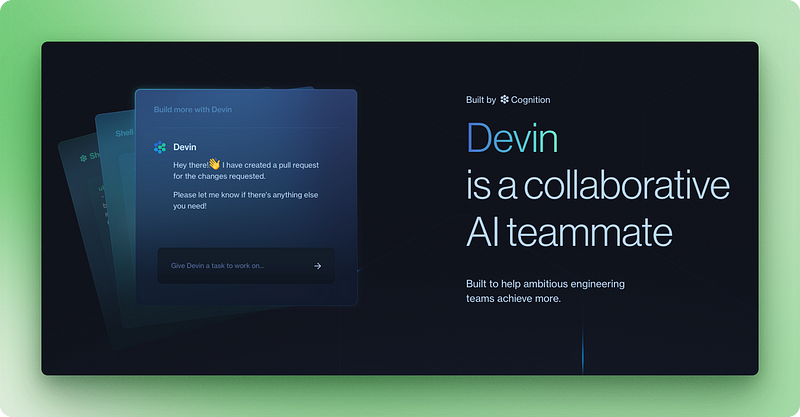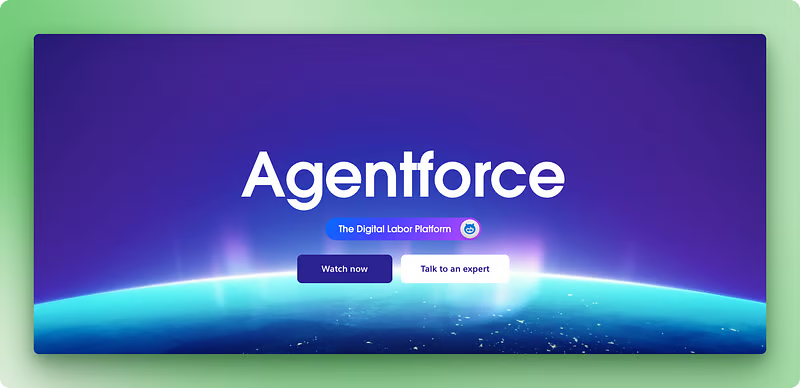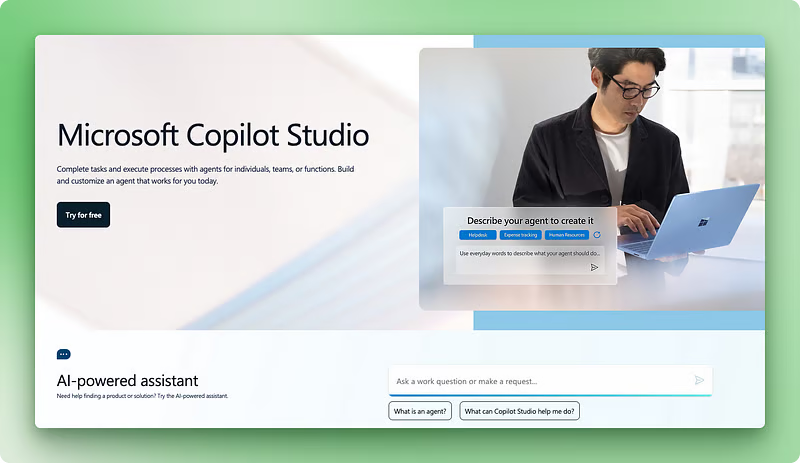Course
Businesses across industries face a common challenge: repetitive tasks that drain time and stall innovation. While traditional automation can handle simple workflows, it struggles with complexity and unpredictability.
AI agents offer a step-change solution. Unlike basic chatbots or rule-based tools, they can analyze information, make decisions, and adapt to new situations—without constant human input. This capability is driving rapid adoption, with the AI agent market reaching $5.4 billion in 2024 and projected to grow at 45.8% annually through 2030.
This guide explores the top AI agent solutions in 2025—from low-code tools to enterprise platforms—focusing on real-world implementation and strategy. Whether you're a developer, data scientist, or tech leader, you’ll find practical insights to guide your next move.
For those new to the concept, our Understanding AI Agents: The Future of Autonomous Systems tutorial provides additional foundational context.
What Are AI Agents?
Before choosing a solution, it’s important to understand what AI agents are and how they differ from traditional automation.
An AI agent is a software system that can sense its environment, analyze data, make decisions, and act to achieve goals—without constant human input. Unlike conventional software, which follows fixed rules, AI agents adapt based on the information they gather and learn from experience.
Most agents rely on four key components:
- Perception: Collecting input from users, sensors, or databases
- Decision-making: Analyzing data using algorithms or LLMs like Claude Sonnet 4
- Action: Responding through system updates, tool use, or outputs
- Learning: Improving over time based on feedback and outcomes
What sets modern agents apart is their ability to process multimodal inputs; not just text, but also images, audio, and video. This gives them a more human-like understanding of context, enabling more sophisticated and flexible responses.
Applications
AI agents are already solving real problems across industries:
- Customer service: Platforms like Agentforce manage inquiries 24/7 and improve with use
- Healthcare: Agents assist with diagnosis and monitor patient data
- Finance: They adapt to detect fraud and power algorithmic trading
- These use cases show how AI agents go beyond automation to deliver adaptable, intelligent decision-making.
Want to learn more? See our guide Agentic AI: How It Works, Benefits, Comparison With Traditional AI for a detailed breakdown.
The Best AI Agents: A Comprehensive List
The AI agent market offers dozens of solutions, but choosing the right platform requires understanding how each addresses specific business needs and technical requirements.
With that said, let’s cover some of the best AI agents across a variety of formats, from development frameworks and tools to pre-built, enterprise agents.
Best AI agent development frameworks and tools
While pre-built enterprise agents work well for larger organizations that can afford them, building custom agents provides a reliable option to get exactly what you need. In this section, we’ll outline the top development frameworks for code-based agent building and the best no-code open-source solutions that make agent development accessible to teams without extensive programming expertise.
1. LangGraph
LangGraph is a specialized framework within the LangChain ecosystem that focuses on building controllable, stateful agents with streaming support.
With over 14,000 GitHub stars and 4.2 million monthly downloads, it has demonstrated strong enterprise adoption, with companies like Klarna reducing customer support resolution time by 80%.
- Stateful agent orchestration: Maintains context throughout extended interactions.
- Multi-agent support: Handles single-agent, multi-agent, hierarchical, and sequential workflows.
- LangSmith integration : Built-in monitoring and performance tracking.
- Human-in-the-loop workflows: Includes approval steps and manual intervention points.
- Streaming capabilities : Real-time response generation for improved user experience.
- Long-term memory: Persistent context across sessions and conversations.
You can get started with our LangGraph tutorial, which explores the platform in more detail and gives and intro guide to getting started.
Multi-Agent Systems with LangGraph
2. AutoGen
AutoGen is Microsoft’s multi-agent conversation framework that uses event-driven architecture for complex collaborative tasks. Released in September 2023, it has grown to over 45,000 GitHub stars and outperforms single-agent solutions on GAIA benchmarks, with companies like Novo Nordisk implementing it for data science workflows.
- Multi-agent conversations : Coordinates multiple AI agents for collaborative problem-solving.
- Event-driven architecture : Handles complex interactions between agents.
- Extensive documentation : Comprehensive tutorials and migration guides.
- LLM integration : Works with various large language models.
- Scalable workflows : Designed for complex enterprise tasks.
- Educational tools : Popular in academic and training environments.
Get started by checking out our AutoGent Tutorial which teaches you how to build multi-agent AI applications.
3. CrewAI
CrewAI orchestrates role-playing AI agents for collaborative tasks with a focus on simplicity and minimal setup requirements. Launched in early 2024, it has gained over 32,000 GitHub stars and nearly 1 million monthly downloads, making it popular for customer service and marketing automation.
- Role-based agents : Assigns specific responsibilities to each agent in the crew.
- Simple implementation : Minimal code required for agent setup.
- LangChain independence : Operates without complex framework. dependencies.
- Collaborative workflows : Agents work together on shared objectives.
- Popular adoption : Widely used in customer service and marketing sectors.
- Rapid deployment : Quick setup for multi-agent systems.
For hands-on implementation guidance, see our CrewAI: A Guide With Examples of Multi AI Agent Systems tutorial.
4. OpenAI Agents SDK
The OpenAI Agents SDK is a lightweight Python framework released in March 2025 that focuses on creating multi-agent workflows with comprehensive tracing and guardrails. With over 11,000 GitHub stars, it offers provider-agnostic compatibility with more than 100 different LLMs.
- Lightweight design : Minimal overhead for multi-agent workflows.
- Provider-agnostic : Compatible with 100+ different language models.
- Comprehensive tracing : Detailed monitoring and debugging capabilities.
- Built-in guardrails: Safety mechanisms and behavior controls.
- Low learning curve : Accessible for Python developers.
- OpenAI integration: Seamless connection with OpenAI services.
Get started with our OpenAI Agents SDK Tutorial for a step-by-step implementation.
5. Google Agent Development Kit (ADK)
Google’s ADK is a modular framework announced in April 2025 that integrates with the Google ecosystem, including Gemini and Vertex AI. With around 10,000 GitHub stars, it supports hierarchical agent compositions and requires less than 100 lines of code for efficient development.
- Google ecosystem integration : Native connection with Gemini and Vertex AI.
- Modular architecture : Flexible component-based development approach.
- Hierarchical compositions : Supports complex agent relationships and dependencies.
- Custom tool development : Build specialized tools for specific use cases.
- Minimal code requirements : Efficient development with under 100 lines of code.
- Agentspace platform : Used in Google’s own agent deployment platform.
Learn implementation details in our Agent Development Kit (ADK) Tutorial.
Building AI Agents with Google ADK
AI Agent Framework comparison
The table below compares the top frameworks and tools for building AI agents, highlighting their key features, ideal use cases, and real-world adoption to help you choose the right fit for your needs.
|
Framework / Tool |
Key Features |
Ideal For |
Notable Users / Integration |
|
LangGraph |
- Stateful agent orchestration - Multi-agent workflows (single, hierarchical, sequential) - LangSmith integration for monitoring - Human-in-the-loop workflows - Streaming capabilities - Long-term memory support |
Teams building robust, context-aware agents for extended interactions |
Klarna (80% reduction in support resolution time) |
|
AutoGen |
- Multi-agent conversation framework - Event-driven architecture - LLM-agnostic - Strong documentation and educational tools - Scalable for complex workflows |
Enterprise and academic environments needing collaboration between agents |
Novo Nordisk (data science pipelines) |
|
CrewAI |
- Role-based agent structure - Simple setup with minimal code - Framework-agnostic - Fast deployment for collaborative workflows |
Customer service, marketing, and teams seeking lightweight orchestration |
Widely adopted for service automation |
|
OpenAI Agents SDK |
- Lightweight multi-agent design - Provider-agnostic (100+ LLMs) - Integrated tracing and debugging - Built-in guardrails for safe execution - Easy for Python developers |
Developers needing customizable workflows with safety and flexibility |
Seamless with OpenAI services |
|
Google Agent Dev Kit (ADK) |
- Native Gemini and Vertex AI integration - Modular, component-based architecture - Hierarchical agent compositions - Efficient with under 100 lines of code - Custom tool development support |
Organizations using the Google Cloud ecosystem for AI deployment |
Powering Google’s internal Agentspace platform |
Best no-code and open-source AI Agents
For teams without deep coding expertise or those looking to move fast, these no-code and open-source AI agent tools offer powerful functionality with minimal setup.
1. Dify
Dify is a low-code platform for creating AI agents with over 93,000 GitHub stars that makes agent development accessible to non-technical users. Its visual interface supports hundreds of different LLMs and includes built-in RAG, Function Calling, and ReAct strategies for comprehensive agent capabilities.
- Visual interface : Drag-and-drop components for agent development.
- Multi-LLM support : Compatible with hundreds of different language models.
- Built-in strategies : Includes RAG, Function Calling, and ReAct approaches.
- TiDB Vector Search : Scalable vector database integration.
- Enterprise features : Document generation and financial report analysis.
- Rapid prototyping : Quick development for startups and enterprises.
You can get started using Dify today with our article, Dify AI: A Guide With Demo Project.
2. AutoGPT
AutoGPT established the open-source AI agent space by breaking down complex goals into manageable sub-tasks that it can execute independently.
Built on OpenAI’s GPT models, it can access the internet, interact with various APIs, and maintain memory across sessions. The platform’s adaptability makes it valuable for research, data collection, and automating repetitive processes.
However, as I explore in our AutoGPT guide, it requires some technical knowledge for setup and maintenance.
Its open-source nature and modular design offer unique advantages for technical teams:
- Task decomposition : Automatically breaks complex goals into executable sub-tasks.
- Internet access : Searches and interacts with web services independently.
- Memory management : Maintains context across extended task sequences.
- API integration : Modular design supports numerous third-party tools.
- Open-source freedom : Complete customization and modification rights.
- Cost structure : Free platform with OpenAI API costs ($0.03-$0.06 per 1,000 tokens).
3. n8n
n8n offers a workflow automation platform that allows teams to create AI agent workflows through drag-and-drop interfaces. This open-source tool supports AI integrations and provides visual workflow building capabilities for automating complex business processes without programming knowledge.
- Drag-and-drop interface: Visual workflow creation without coding.
- AI integration support: Connects with various AI services and models.
- Workflow automation: Automates complex business processes and data flows.
- Open-source platform: Community-driven development with self-hosting options.
- Extensive connectors : Supports hundreds of different services and APIs.
- Visual debugging : Easy troubleshooting and workflow monitoring tools.
See our n8n AI Tutorial for workflow automation examples.
4. Rasa
Rasa provides an open-source framework for building sophisticated conversational AI with extensive customization potential. Trusted by enterprises like American Express, its CALM architecture separates language understanding from business logic, allowing any LLM integration without disrupting workflows.
- Full customization control : Modify any aspect of the conversational system.
- CALM architecture : Clean separation between language understanding and business logic.
- On-premises deployment : Maintains complete data control for sensitive applications.
- Enterprise support : Professional services and support for production deployments.
- Multi-language support : Handles diverse linguistic requirements.
- Community development : Active contributor ecosystem with regular updates.
5. BotPress
BotPress combines a visual flow builder with code hooks to create highly customizable chatbots with extensive analytics capabilities. This open-source platform provides a GUI flow-builder while supporting custom integrations and detailed performance monitoring for agent interactions.
- Visual flow builder : GUI-based conversation design without coding requirements.
- Code hooks : Custom programming integration for advanced functionality.
- Analytics dashboard : Comprehensive tracking of agent performance and user interactions.
- Multi-platform deployment: Supports various messaging channels and platforms.
- Open-source flexibility: Community-driven development with extensible architecture.
- Custom integrations : Connects with external APIs and business systems.
No-code and open-source AI agent comparison
The following table breaks down top no-code and open-source AI agent tools, comparing their core features, strengths, and ideal use cases, making it easier to select the right solution based on your team’s technical needs and goals.
|
Tool |
Key Features |
Ideal For |
Notable Attributes / Use Cases |
|
Dify |
- Visual drag-and-drop agent builder - Supports hundreds of LLMs - Built-in RAG, ReAct, and Function Calling - TiDB vector database integration - Document generation & analysis |
Non-technical users, startups, and enterprise teams needing rapid prototyping |
Combines simplicity with deep functionality for business use cases |
|
AutoGPT |
- Goal decomposition into sub-tasks - Internet access and API interaction - Persistent memory - Modular and open-source - Free to use (OpenAI API costs apply) |
Technical teams and researchers automating multi-step workflows |
Pioneer in autonomous agent development, adaptable for many domains |
|
n8n |
- No-code, drag-and-drop workflow builder - Visual automation with AI service integration - Open-source and self-hostable - Supports hundreds of APIs - Visual debugging tools |
Business teams automating processes without coding |
Ideal for automating complex, multi-service workflows |
|
Rasa |
- Open-source conversational AI framework - CALM architecture decouples logic and language - On-prem deployment - Multi-language support - Full customization |
Enterprises and dev teams needing scalable, private chatbots |
Trusted by large organizations like American Express |
|
BotPress |
- Visual flow builder with code hook support - Custom integrations & extensibility - Analytics dashboard - Multi-platform messaging support - Open-source flexibility |
Teams building advanced, multi-platform chatbots with analytics |
Combines visual ease with dev-level control and insights |
Best pre-built enterprise AI agents
The tools below represent the leading pre-built enterprise AI agents—designed for scalable, production-grade deployment. These platforms offer robust capabilities out of the box, with deep integration into existing ecosystems
1. Devin AI (Cognition Labs)

Devin AI stands out as the first truly capable AI software engineer, handling complete development projects from planning to deployment. Built by competitive programmers with 10 IOI gold medals, this platform combines large language models with reinforcement learning in a sandboxed environment.
Companies like Nubank have reported 12x efficiency improvements and 20x cost savings when migrating multi-million-line codebases. The platform excels at legacy code migration, bug fixing, and AI model fine-tuning.
The platform’s capabilities and pricing structure reflect its focus on development:
- Independent coding: Writes, debugs, and deploys complete applications independently.
- Real-time collaboration : Allows developers to work alongside the AI agent.
- Legacy code migration: Specializes in modernizing complex, outdated codebases.
- API integration : Connects with VSCode and other development tools.
- Flexible pricing: Core plan at $20/month, Team at $500/month, Enterprise custom pricing.
- Learning capability: Improves performance through user feedback and coaching.
2. Agentforce (Salesforce)

Agentforce extends Salesforce’s CRM dominance into AI agent territory, providing pre-built solutions for sales, service, marketing, and commerce functions.
The platform combines generative AI with agentic reasoning, using Salesforce’s Data Cloud for context-aware automation. Major clients like The Adecco Group, OpenTable, and Saks use Agentforce to provide faster, more personalized customer responses.
The platform’s strength lies in its deep CRM integration and established enterprise relationships.
The platform’s enterprise focus delivers comprehensive business automation capabilities:
- CRM integration : Connects directly with existing Salesforce data and workflows.
- Pre-built agents : Ready-made solutions for common business functions.
- Low-code builder : Agent Builder tool for creating custom automation without programming.
- Multi-channel deployment: Works across web, mobile, Slack, and other platforms.
- Data Cloud access : Uses Salesforce’s unified customer data for personalized interactions.
- Subscription pricing : Integrated with existing Salesforce plans (specific costs undisclosed).
3. Microsoft Copilot Studio

Microsoft Copilot Studio provides a comprehensive platform for building AI assistants that integrate with Microsoft 365 applications.
The low-code approach allows business users to create custom agents without extensive programming knowledge. Companies like ICG have reported $500,000 in cost savings and 20% margin improvements through Copilot implementation.
The platform’s tight integration with Microsoft 365 provides immediate value for organizations already using these tools. You can get familiar with Microsoft Copilot in our Introduction to Microsoft Copilot course.
The platform’s productivity focus delivers immediate value for Microsoft ecosystem users:
- Microsoft 365 integration : Native automation across Word, Excel, Outlook, and Teams.
- Low-code development : Visual tools for creating agents without programming.
- Multi-agent orchestration : Coordinates multiple AI agents for complex workflows.
- Azure AI integration : Access to over 1,800 Azure AI Foundry models.
- Computer use capabilities —: Recent updates allow agents to interact with desktop applications.
- Subscription model : Included with Microsoft 365 Copilot add-on pricing.
4. IBM Watsonx Assistant

IBM Watsonx Assistant brings decades of AI research experience to conversational interface development, focusing on enterprise-grade security and compliance requirements.
The platform combines natural language understanding with machine learning and an intuitive dialog editor. It suits industries with strict compliance requirements, such as banking and healthcare, where IBM’s reputation for enterprise security provides confidence. However, the platform may involve higher costs and more complex setup compared to newer entrants.
The platform’s enterprise heritage delivers strong conversational AI capabilities:
- Enterprise security : Meets strict compliance requirements for regulated industries.
- Multi-channel support: Handles text and voice interactions across various platforms.
- No-code dialog editor : Visual interface for creating conversation flows.
- Business system integration: Connects with existing enterprise applications and databases.
- Generative AI improvement : Uses watsonx LLMs for improved response quality.
- Cloud-based pricing : Subscription plans through IBM Cloud (specific costs vary by usage).
Other notable mentions
Several specialized platforms address specific business needs with unique approaches.
- OpenAI’s Codex: Codex is OpenAI’s cloud-based software engineering agent designed to automate coding tasks such as writing features, fixing bugs, running tests, and proposing pull requests. Each task operates within its own secure cloud sandbox, preloaded with the user’s repository. Learn more in this tutorial on Codex.
- Google Jules: Jules is Google’s asynchronous AI coding assistant that integrates directly with developers’ repositories. It clones the codebase into a secure Google Cloud virtual machine, understands the full context of the project, and performs tasks such as writing tests, building new features, fixing bugs, and updating dependencies. Learn more in this tutorial on Google Jules.
- OpenAI’s Operator: An AI agent that is designed to interact with websites like a human, by clicking, typing, and navigating interfaces based on visual input. Running in a secure browser environment, it can book travel, order food, and fill out forms. Sensitive actions like logins or payments require user approval. Learn more in this blog on OpenAI’s Operator.
- Project Astra represents Google’s vision for a universal AI assistant that can understand and interact through multiple modalities. This prototype combines advanced language models with computer vision and real-time processing capabilities, allowing natural interactions through text, voice, images, and video.
- Yellow.ai specializes in conversational automation with support for 135+ languages, serving global companies like Domino’s and Hyundai.
- Moveworks focuses on employee support automation, helping organizations like CVS Health reduce live agent chats by 50%.
- AWS Q Dev Amazon upgraded Amazon Q Developer Chat with agentic, multi-step reasoning so the assistant can autonomously call 200 + AWS APIs, diagnose resource issues, and apply fixes inside the console or Slack without human hand-holding.
- SAP Joule . Joule Studio lets SAP customers build no-code agents (“skills”) that pull live ERP data, suggest next-best actions, and automate approvals—keeping governance intact while speeding decisions. GA for custom skills in June; custom agents land later this year.
Comparison analysis
|
Platform |
Primary Function |
Access Model |
Pricing |
Best For |
Main Limitation |
|
Independent software engineering |
SaaS with API |
$20–$500/month |
Development teams, legacy code migration |
Limited to coding tasks |
|
|
Task automation |
Open-source |
Free + API costs |
Technical teams, custom automation |
Requires technical setup |
|
|
Business automation |
Salesforce subscription |
Part of Salesforce plans |
CRM users, customer service |
Salesforce ecosystem dependency |
|
|
Productivity automation |
Microsoft 365 subscription |
Part of Microsoft 365 |
Microsoft users, workflow automation |
Microsoft-focused |
|
|
Enterprise conversational AI |
IBM Cloud subscription |
Cloud-based plans |
Regulated industries, enterprise security |
Complex setup, higher costs |
Development teams should also consider AI coding assistants as complementary tools to full agent platforms. Our guide to The 12 Best AI Coding Assistants in 2025 covers specialized tools that work alongside agent systems.
The choice between platforms often depends more on existing technology investments and organizational capabilities than pure feature comparisons.
Development-focused platforms like Devin AI excel at coding tasks, while enterprise solutions like Agentforce and Watsonx Assistant prioritize business system integration.
Open-source options provide adaptability but require technical expertise, whereas subscription-based platforms offer comprehensive support with ecosystem dependencies.
Implementation Strategies and Best Practices
Moving from agent evaluation to successful deployment requires a structured approach that addresses both technical requirements and organizational readiness.
Getting started
If you’re just starting out, these tips can help you get up to speed in no time.
1. Start with assessment and planning
Successful AI agent implementation begins with a thorough assessment of your current workflows and technical infrastructure. Identify processes involving repetitive decision-making or data analysis, as these represent the strongest candidates for agent automation. Document existing pain points, measure current performance metrics, and establish baseline measurements for evaluating agent effectiveness later.
2. Choose the right platform for your team
Selection should align agent capabilities with your specific use cases rather than choosing based on popularity alone. Technical teams benefit from frameworks like LangGraph or AutoGen for custom development, while business users often find more value in low-code platforms like Dify or established enterprise solutions. Consider your team’s programming expertise, existing technology stack, and long-term maintenance capabilities.
3. Run focused pilot tests
Begin with a single, well-defined use case that offers measurable business value but won’t disrupt operations if issues arise. Most organizations find that 2–3 month pilot periods provide sufficient time to evaluate effectiveness and address initial technical hurdles.
Technical teams can build expertise through structured learning with our Associate AI Engineer for Developers track, while data science teams benefit from the Associate AI Engineer for Data Scientists pathway.
Best practices
Once you have chosen the right tool and you start developing your AI agents, here are some best practices to bear in mind.
1. Build agent systems, not isolated tools
Rather than deploying isolated agents, build agent systems where specialized components work together — one agent handles data collection while another performs analysis and a third takes action based on results. This approach mirrors the collaborative workflows that leading companies like OpenAI and Anthropic recommend.
2. Follow the proven four-step workflow
Implement the four-step agent workflow: user task assignment, planning and work allocation, iterative output improvement, and action execution. Build feedback loops where agents can review and refine their work before final delivery, improving output quality over time.
3. Avoid common implementation mistakes
Agents work best for unpredictable situations where rule-based systems would fail, rather than simple workflow automation. Avoid automating everything immediately; instead, focus on high-value processes that benefit from intelligent decision-making.
4. Measure what matters
Track both quantitative metrics like issue resolution rates and qualitative measures such as user satisfaction. Set clear performance baselines and establish regular review cycles to identify optimization opportunities.
5. Plan for growth from day one
Consider increased API usage costs, infrastructure requirements, and support needs as agent usage grows. Develop internal expertise through training programs to reduce dependency on external vendors. Successful agent implementations often lead to process reimagining and broader digital transformation initiatives.
Final Thoughts
AI agents are evolving fast, from simple chatbots to systems that plan, act, and collaborate with minimal input. They're becoming more capable, more multimodal, and more integrated into real business workflows.
But with this power comes responsibility. Regulations like the EU AI Act mean organizations must prioritize oversight, transparency, and compliance from the start.
Want to learn how to work with modern AI agents? Check out our Build dynamic LangChain agents Course to get hands-on with the tools shaping this new era.
Introduction to AI Agents
Best AI Agent FAQs
What are AI agents and how do they differ from chatbots?
AI agents are software programs that can analyze information, make decisions, and execute tasks without constant human oversight. Unlike chatbots that follow predetermined paths, AI agents make independent decisions based on data they gather and can adapt to new situations through learning.
Which AI agent platform is best for my business?
The best platform depends on your existing technology stack and use case. Devin AI excels for development teams, Agentforce works best for Salesforce users, Microsoft Copilot Studio suits Microsoft 365 environments, while open-source options like Auto-GPT offer maximum customization for technical teams.
How much do AI agents cost to implement?
Costs vary widely by platform. Open-source solutions like Auto-GPT are free (plus API costs), while enterprise platforms range from $20/month (Devin AI Core) to $500/month (Devin AI Team). Many enterprise solutions integrate with existing subscription plans rather than separate pricing.
Can I build my own AI agent without programming experience?
Yes, several no-code platforms make AI agent development accessible. Dify offers visual drag-and-drop interfaces, Microsoft Copilot Studio provides low-code tools for business users, and BotPress combines visual flow builders with optional code customization.
What business processes work best for AI agent automation?
AI agents excel at processes involving repetitive decision-making, data analysis, and unpredictable situations where rule-based systems would fail. Common applications include customer service, data collection and analysis, content generation, and workflow coordination across multiple systems.

I am a data science content creator with over 2 years of experience and one of the largest followings on Medium. I like to write detailed articles on AI and ML with a bit of a sarcastıc style because you've got to do something to make them a bit less dull. I have produced over 130 articles and a DataCamp course to boot, with another one in the makıng. My content has been seen by over 5 million pairs of eyes, 20k of whom became followers on both Medium and LinkedIn.


